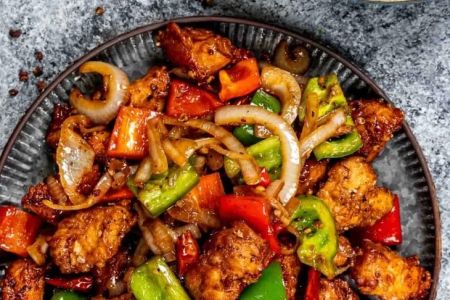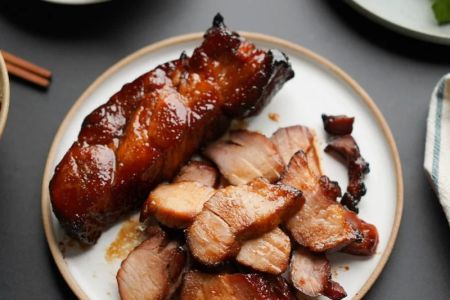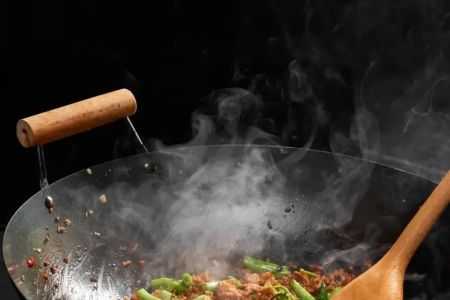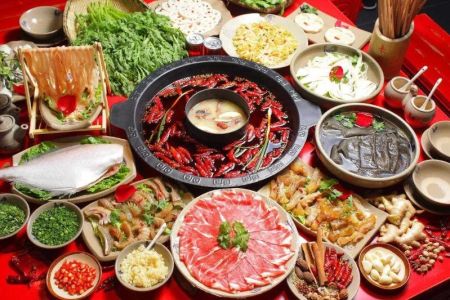What’s the Difference Between Cantonese and Sichuan Chinese Food?
- 1. What Is Cantonese Cuisine?
- 2. What Is Sichuan Cuisine?
- 3. Key Flavors and Spices in Cantonese Food
- 4. Key Flavors and Spices in Sichuan Food
- 5. Popular Dishes in Cantonese Cuisine
- 6. Popular Dishes in Sichuan Cuisine
- 7. How to Choose Between Cantonese and Sichuan Cuisine
What Is Cantonese Cuisine?
Cantonese cuisine, originating from the Guangdong province in southern China, is one of the most well-known and widely consumed styles of Chinese food globally. The hallmark of Cantonese food is its emphasis on fresh ingredients and subtle flavors. Cantonese chefs often use a variety of cooking techniques, such as stir-frying, steaming, and braising, to highlight the natural taste of each ingredient.
Unlike other regional cuisines, Cantonese food is generally not very spicy. It leans towards a savory-sweet flavor profile, often with a delicate balance of light soy sauce, rice wine, and a variety of herbs. Cantonese cuisine is also renowned for its dim sum, which are bite-sized portions of food typically served with tea.
What Is Sichuan Cuisine?
Sichuan cuisine, originating from the Sichuan province in southwestern China, is known for its bold, intense flavors, especially the unique combination of spicy and numbing. The key to Sichuan food lies in the liberal use of ingredients like chili peppers, Sichuan peppercorns, garlic, and ginger. This results in dishes that are not only spicy but also have a characteristic numbing sensation, known as "mala," which comes from the Sichuan peppercorns.
Known for its strong and complex flavors, Sichuan food is often characterized by a fiery heat that leaves an unforgettable impression on the taste buds. Sichuan cuisine is famous for its deep, savory broths, often made from fermented bean paste and soy sauce, adding an extra layer of umami to the dishes.
Key Flavors and Spices in Cantonese Food
The flavors in Cantonese food are built around subtlety and balance. The use of fresh herbs, light soy sauce, rice wine, and sometimes a touch of sugar creates a complex flavor without overpowering the ingredients. Cantonese food focuses on the natural tastes of meats, seafood, and vegetables, allowing the flavors to shine through.
Common Cantonese spices include star anise, cinnamon, and cloves, but these are used in moderation. Fresh ingredients like ginger, garlic, and scallions are often used to infuse light broths and sauces with fragrance and depth. This restraint in seasoning ensures that the flavor of the core ingredient, whether it's seafood, chicken, or pork, remains prominent.
Key Flavors and Spices in Sichuan Food
Sichuan food is all about bold flavors that excite the palate. The most important ingredient in Sichuan cuisine is the Sichuan peppercorn, which provides the signature numbing "mala" effect. Combined with fiery hot chili peppers, garlic, and fermented sauces, Sichuan food packs a punch.
Sichuan chefs often use a variety of oils, such as chili oil or sesame oil, to amplify the intensity of their dishes. The deep umami flavors come from fermented bean paste, soy sauce, and pickled vegetables, which contribute to the layered, savory complexity that Sichuan cuisine is known for.
Popular Dishes in Cantonese Cuisine
Cantonese cuisine offers a wide variety of dishes, from dim sum to wok-fried meats. Some of the most iconic Cantonese dishes include:
- Dim Sum: Small bite-sized portions of food served in baskets or on small plates, ranging from dumplings to buns filled with various meats or sweet fillings.
- Char Siu: Cantonese-style barbecued pork, marinated in a sweet soy-based sauce and roasted to perfection.
- Steamed Fish: Fresh fish, usually steamed with ginger, garlic, and soy sauce, to preserve its delicate flavor.
- Wonton Soup: A comforting broth with delicate dumplings filled with shrimp or pork.
Popular Dishes in Sichuan Cuisine
Sichuan cuisine features some intense, flavor-packed dishes that highlight the region's love for spice and heat. Popular Sichuan dishes include:
- Mapo Tofu: A spicy and numbing tofu dish cooked in a sauce made from fermented bean paste, chili oil, and Sichuan peppercorns.
- Kung Pao Chicken: A stir-fried dish made with chicken, peanuts, and chili peppers, showcasing the perfect balance of spicy and savory.
- Twice-Cooked Pork: Pork belly that's first boiled, then stir-fried with leeks, chili paste, and fermented bean paste for a rich, smoky flavor.
- Dan Dan Noodles: A popular street food dish with noodles served in a spicy, chili-laden sauce with Sichuan peppercorns.
How to Choose Between Cantonese and Sichuan Cuisine
When deciding whether to go for Cantonese or Sichuan food, it ultimately depends on your taste preferences. If you're looking for something light, balanced, and fresh, Cantonese cuisine is an excellent choice. Its subtle flavors and emphasis on fresh ingredients make it a favorite for those who enjoy simple, well-prepared meals.
If you crave something bold and spicy, Sichuan cuisine is the way to go. With its intense heat and complex flavors, Sichuan food will excite those who enjoy dishes that are both spicy and numbing, leaving a lasting impression on the taste buds.
Both cuisines offer something unique, so try both to discover which style resonates best with your palate. For a deeper dive into the best Chinese food options, check out [Chinese Food](https://www.gochinarose.com).






![Top Chinese Restaurants for Authentic Cantonese Cuisine in [Your City]](https://img.gochinarose.com/d33/2507/4157910400_450x300.webp)
